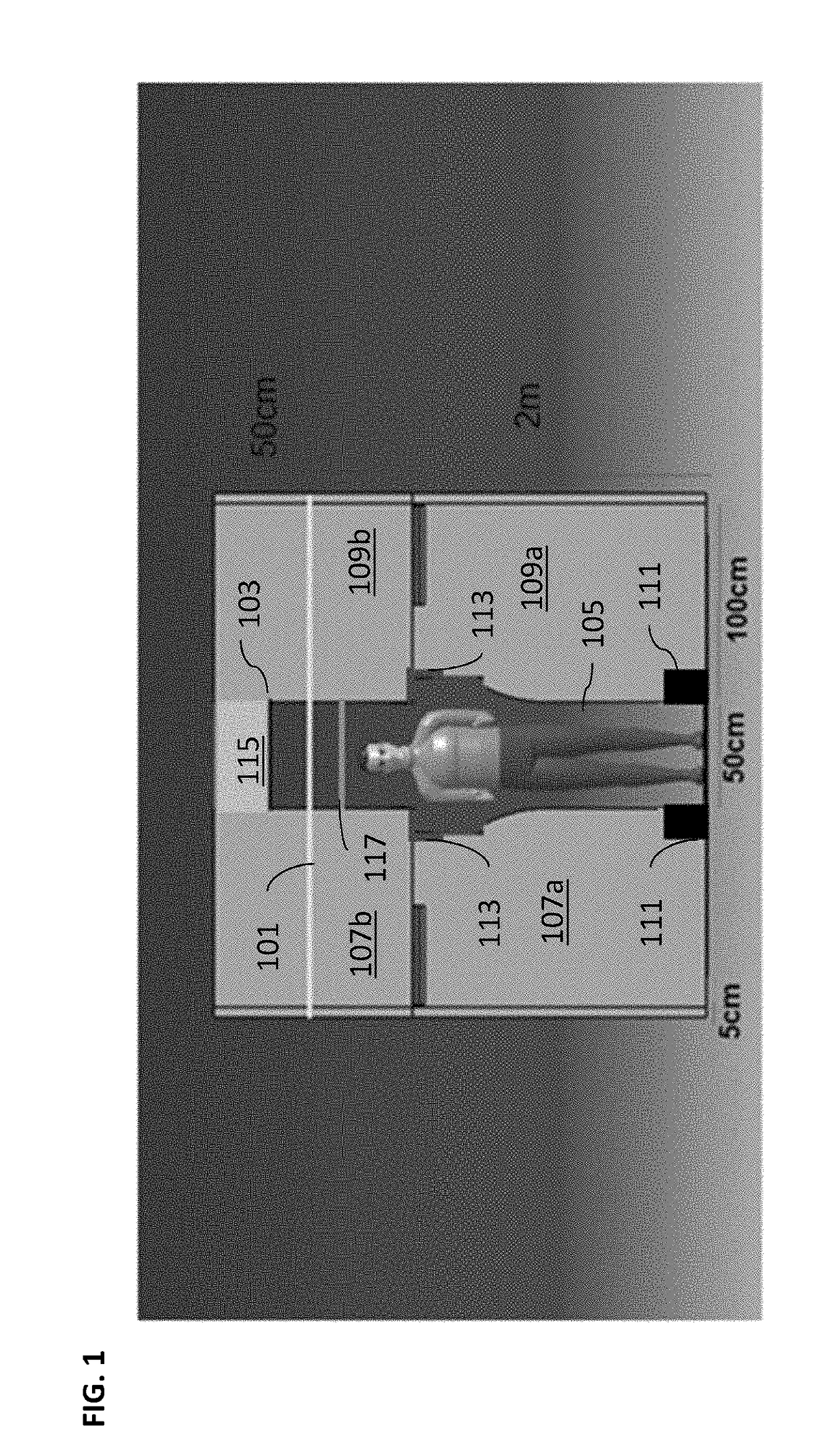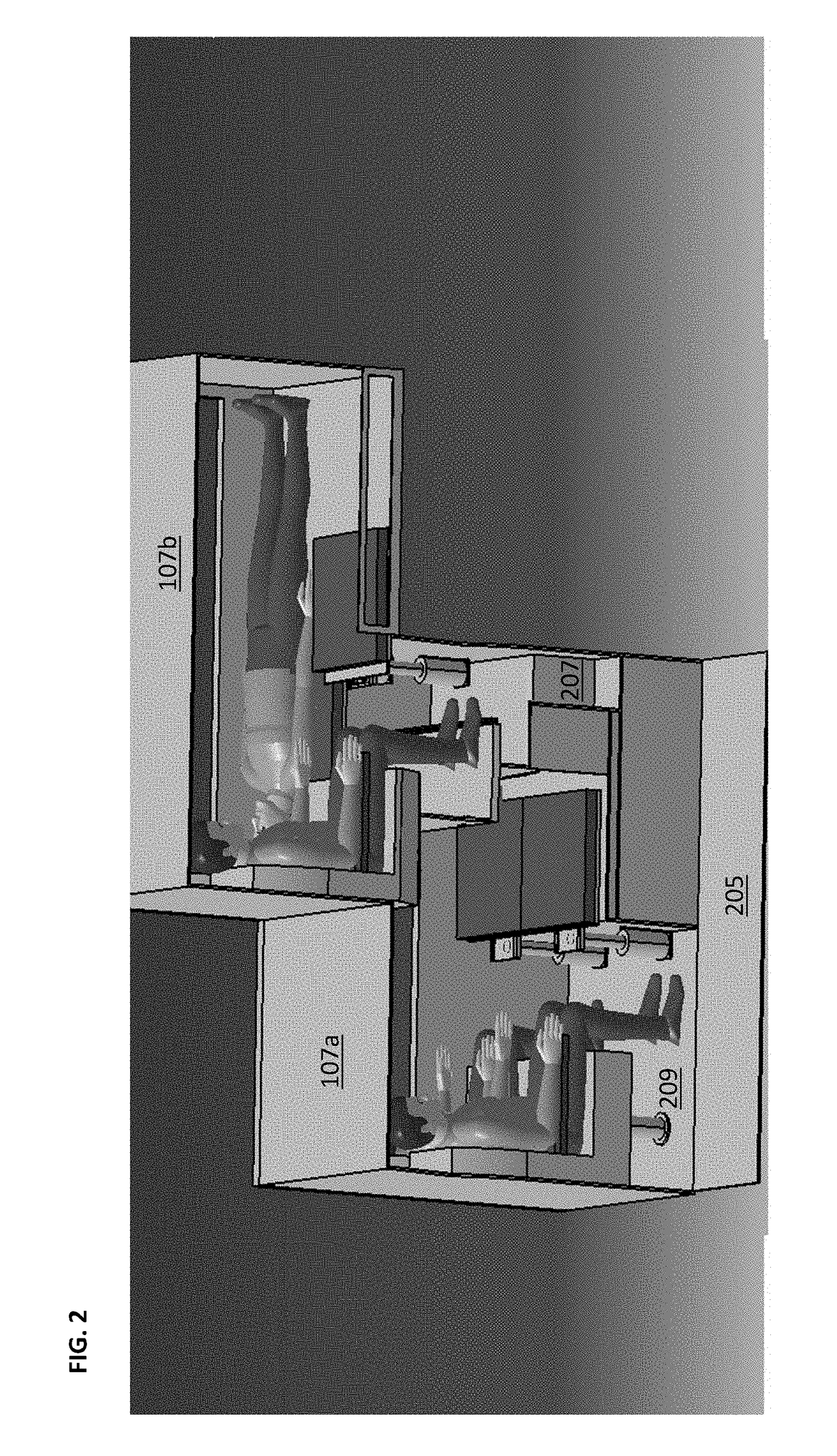Passenger compartment for commercial passenger transportation vehicles
a passenger transportation and passenger compartment technology, applied in the field of passenger compartments, can solve the problems of reducing the popularity of this type of bus, unable to provide flat beds for passengers, and buses typically lack sleep facilities
- Summary
- Abstract
- Description
- Claims
- Application Information
AI Technical Summary
Benefits of technology
Problems solved by technology
Method used
Image
Examples
Embodiment Construction
[0050]In the following detailed description, numerous specific details are set forth by way of examples in order to provide a thorough understanding of the relevant teachings. However, it should be apparent to those skilled in the art that the present teachings may be practiced without such details. In other instances, well known methods, procedures, components, and / or circuitry have been described at a relatively high-level, without detail, in order to avoid unnecessarily obscuring aspects of the present teachings.
[0051]Ordinary two axel buses having a length of 12.5 meters may have at least a total capacity of 38 passenger seats. This capacity may be increased up to 42 seats with different seat arrangements. In some cases, by adding a row of 5 non-reclining seats on the engine bump at the end of the bus the total capacity increases to 44 passenger seats. As previously discussed, the tow axel buses may be at most 12 to 12.5 meters long. The common ordinary buses may have 11 rows of...
PUM
 Login to View More
Login to View More Abstract
Description
Claims
Application Information
 Login to View More
Login to View More - R&D
- Intellectual Property
- Life Sciences
- Materials
- Tech Scout
- Unparalleled Data Quality
- Higher Quality Content
- 60% Fewer Hallucinations
Browse by: Latest US Patents, China's latest patents, Technical Efficacy Thesaurus, Application Domain, Technology Topic, Popular Technical Reports.
© 2025 PatSnap. All rights reserved.Legal|Privacy policy|Modern Slavery Act Transparency Statement|Sitemap|About US| Contact US: help@patsnap.com



